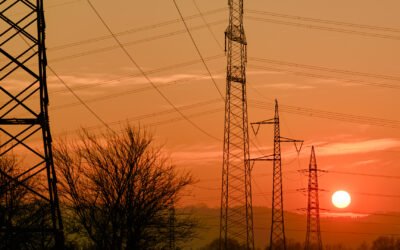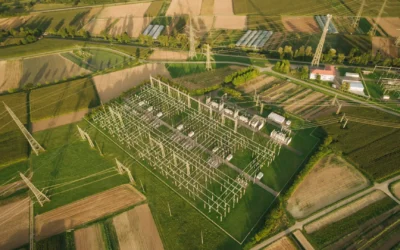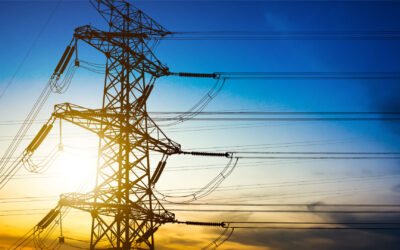- There has been a significant surge in the development of EVCI due to the widespread adoption of EVs in Europe.
- By 2030, it is expected that Europe will dominate global EV charger I&C and maintenance market and for a 42% and 50% share of the market in 2030, respectively.
- As the EVCI services market is witnessing growth, several trends have emerged, including demand for DC chargers, a shift to preventive and remote maintenance, the popularity of advertising-enabled EV chargers, and recycling practices.
Increasing EV adoption in Europe due to climate concerns directly impacts the need for electric vehicle charging infrastructure (EVCI) services. These services include installing and commissioning (I&C) charging stations, employing preventive, corrective, and predictive maintenance of the equipment, and upgrading and recycling chargers during end-of-lifecycle processes. The article discusses the market landscape, key players, and emerging trends in EVCI services in Europe.

Figure 1: EVCI Services Value Chain.
Source: PTR Inc.
Landscape of EVCI Services Market
There has been a significant surge in the development of EVCI due to the widespread adoption of EVs in Europe to move towards sustainability. As of December 2023, Europe boosted approximately 6.2 million public and private EV charging points, with DC charging experiencing considerable growth. The leading countries to install DC charging points are Germany, France, Denmark, and the UK, while the leading countries to install AC charging points are the Netherlands, France, Germany, and Belgium. The increasing deployment of EV chargers in Europe necessitates greater installation and maintenance services. By 2030, Europe is expected to dominate the global EV charger I&C and maintenance market and account for 42% and 50% of the market share in 2030, respectively.
The key service providers that are actively contributing to the growth of EVCI services in multiple European countries are shown in the figure below.

Figure 2: Key EVCI Service Providers in Europe.
Source: PTR Inc.
EVCI Services Market Trends
As the EVCI services market is witnessing promising growth, several trends have emerged including demand for DC chargers, shift to preventive and remote maintenance, popularity of advertising enabled EV chargers and recycling practices.
Demand for DC chargers
In 2023, DC chargers dominated the European EV charger I&C and maintenance services market. It is expected that DC chargers will hold a 68% share of the I&C services market by 2030. Moreover, in terms of maintenance services, DC chargers, especially DC fast chargers, require more upkeep than AC chargers due to their complex components like converters, cooling systems, and filters. DC chargers call for frequent servicing intervals, often quarterly or monthly, while AC chargers need annual maintenance. Thus, the maintenance market for DC chargers surpasses that of AC chargers in Europe.
Preventive and remote maintenance
Across Europe, particularly in the UK, Germany, Netherlands, and France, individuals are showing a strong preference for preventive maintenance on EV chargers, resulting in an 84% share of preventive maintenance in the overall maintenance market in 2023. In the future, the market share of preventive maintenance is expected to increase to 94% by 2030, resulting from increasing demand for EV chargers and a proactive attitude among users who prioritize regular maintenance.
Moreover, there has been a notable increase in utilizing remote maintenance and artificial intelligence (AI) to oversee EV chargers, facilitating real-time diagnostics for smoother operations and enhanced user satisfaction. Advanced AI algorithms are being worked upon to predict and boost the reliability of chargers, complemented by the increasing adoption of visualization tools like dashboards for comprehensive data reporting.
Increase in advertising-enabled EV chargers.
A new trend emerging in Europe is the increasing use of EV chargers featuring media screens for displaying advertisements. Stakeholders in the EVCI industry are partnering with relevant businesses according to specific locations to integrate ads with EV chargers, enhancing brand visibility and fostering innovation. This digital out-of-home (DOOH) advertising at strategically placed charging stations is cost-effective compared to traditional channels, providing extended exposure times for deeper audience engagement. For instance, Numbat, a Germany-based Cleantech startup, has collaborated with Broadsign to enhance the advertising capabilities of its charging stations. Moreover, Enel X Way in Italy plans to establish more than 18,000 charging points with integrated advertising services, whereas Revolt in the Netherlands plans to triple the size of its current 20 charging stations with DOOH-enabled screens to the rest of Europe. These examples show how advertising-enabled EV chargers are growing in popularity across Europe.
In terms of revenue generation, charge point operators (CPOs) are the primary beneficiaries of advertising at EV charging stations. By strategically incorporating advertising services into their charging infrastructure, these operators unlock a lucrative revenue stream. This business model enables advertisers to partially cover the cost of EV chargers, ensuring substantial revenue for CPOs even with low charger usage. Hence, advertisements become a reliable income source for these companies, irrespective of charging station utilization.
Recycling practices
Several companies in the European EVCI sector prioritize environmental sustainability by integrating recycling practices at the end of life-cycle processes. For example, Kempower, a Finnish company, aims for a 99% recyclability rate for its DC fast chargers, while Wallbox, a Spanish EV charging provider, commits to recycling old charging units. Moreover, another development in Europe involves upgrading EV chargers for faster charging capacities to reuse them effectively. While Europe leads in charger upgrades compared to North America, it lags in comparison to the APAC region, where stringent government policies drive the adoption of fast charging technologies.
Looking Ahead
Europe’s EVCI services market is witnessing significant growth driven by a surge in EV charger deployment and a corresponding increase in demand for installation and maintenance services. Key trends such as the dominance of DC chargers, a preference for preventive maintenance, integration of remote maintenance, and AI technologies highlight the region’s commitment to advancing its EVCI. Additionally, the rise of advertising-enabled EV chargers and the emphasis on environmental sustainability through recycling practices highlight the dynamic and innovative landscape of the European EVCI services sector.
EV Charging Infrastructure Service Overview
The research presented in this article is from PTR's EV Charging Infrastructure market research. For information about this service please submit a request shown below.
Europe: +49-89-12250950
Americas: +1 408-604-0522
Japan: +81-80-7808-1378
GCC/Rest of APAC: +971-58-1602441
More About our: EV Charging Infrastructure Market Research
Recent Insights
US Elections: Consequences of a Second Trump Presidency for Energy Sector
The US is making strides to move away from fossil fuels and eventually decarbonize the energy sector. The White House aims to achieve 80% renewable energy generation by 2030 and 100% carbon-free electricity by 2035. On the other hand, for electric vehicles, it has set...
Sustainability Across Sectors: Highlights from GreenTech Festival 2024
Recently, I had the privilege to attend and present at the Greentech Festival, an excellent event in the realm of sustainability. This influential gathering left a profound impact, and I am delighted to share a comprehensive analysis of my experiences. The Greentech...
HVDC as the Backbone of Offshore Wind Expansion in the North Sea
This infographic discusses how the expansion of offshore wind in the North Sea will drive the HVDC market in Europe.HVDC as the Backbone of Offshore Wind Expansion in the North SeaKey Trends in the HVDC MarketOffshore wind will drive HVDC deployment in the North Sea,...
US Elections: Consequences of a Second Trump Presidency for Energy Sector
The US is making strides to move away from fossil fuels and eventually decarbonize the energy sector. The White House aims to achieve 80% renewable energy generation by 2030 and 100% carbon-free electricity by 2035. On the other hand, for electric vehicles, it has set...
Sustainability Across Sectors: Highlights from GreenTech Festival 2024
Recently, I had the privilege to attend and present at the Greentech Festival, an excellent event in the realm of sustainability. This influential gathering left a profound impact, and I am delighted to share a comprehensive analysis of my experiences. The Greentech...
HVDC as the Backbone of Offshore Wind Expansion in the North Sea
This infographic discusses how the expansion of offshore wind in the North Sea will drive the HVDC market in Europe.HVDC as the Backbone of Offshore Wind Expansion in the North SeaKey Trends in the HVDC MarketOffshore wind will drive HVDC deployment in the North Sea,...
Powering Europe’s Future: The Surge of Interconnected HVDC Networks
The European HVDC market is poised for significant growth as it aligns with the expansion of offshore wind projects. European countries are planning to add 70 GW of offshore wind. The European Commission has set forth ambitious objectives, aiming to double...



